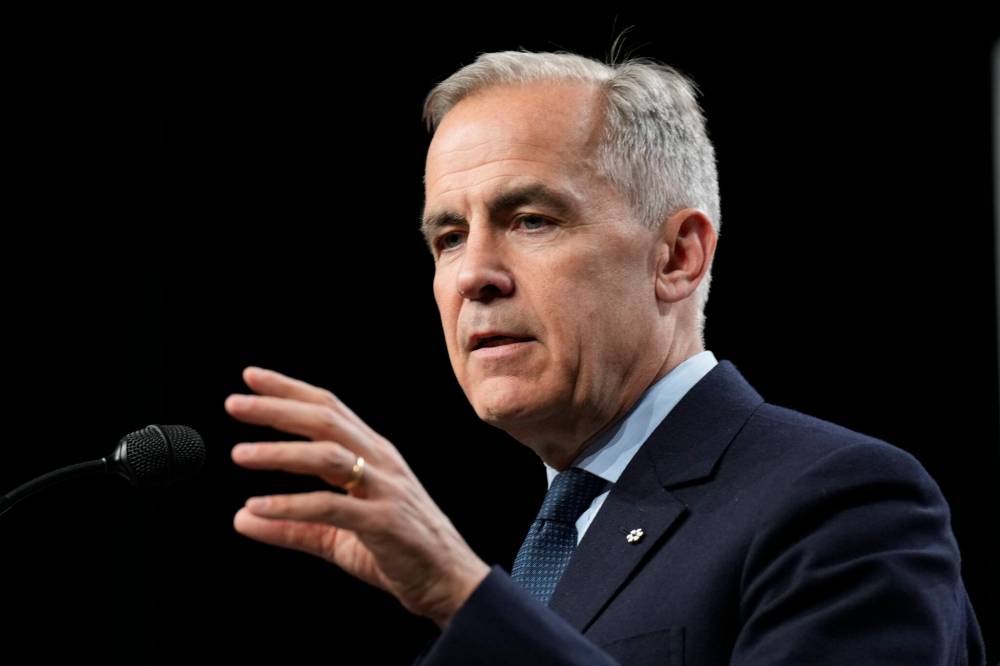The clock is ticking on tariff negotiations
Advertisement
Read this article for free:
or
Already have an account? Log in here »
To continue reading, please subscribe:
Monthly Digital Subscription
$0 for the first 4 weeks*
- Enjoy unlimited reading on winnipegfreepress.com
- Read the E-Edition, our digital replica newspaper
- Access News Break, our award-winning app
- Play interactive puzzles
*No charge for 4 weeks then price increases to the regular rate of $19.00 plus GST every four weeks. Offer available to new and qualified returning subscribers only. Cancel any time.
Monthly Digital Subscription
$4.75/week*
- Enjoy unlimited reading on winnipegfreepress.com
- Read the E-Edition, our digital replica newspaper
- Access News Break, our award-winning app
- Play interactive puzzles
*Billed as $19 plus GST every four weeks. Cancel any time.
To continue reading, please subscribe:
Add Free Press access to your Brandon Sun subscription for only an additional
$1 for the first 4 weeks*
*Your next subscription payment will increase by $1.00 and you will be charged $16.99 plus GST for four weeks. After four weeks, your payment will increase to $23.99 plus GST every four weeks.
Read unlimited articles for free today:
or
Already have an account? Log in here »
It’s T minus one.
As in, tariffs minus one. Or Trump minus one. Or maybe even TACO minus one.
Only time — precious little time — will tell.

ADRIAN WYLD / THE CANADIAN PRESS FILES
Prime Minister Mark Carney
On Aug. 1, the Trump administration has said its self-imposed range of tariffs on myriad foreign countries — including Canada — will come into effect. (Unless it turns out to be TACO minus one — U.S. President Donald Trump has backtracked so many times on announced tariffs that he’s earned the nickname “TACO,” an acronym for “Trump Always Chickens Out.”)
For Canada, that would mean a 35 per cent tariff on products not detailed in the USMCA trade deal, as well as the continuation of tariffs on aluminum, steel and automobiles, and a new copper tariff that also would come into effect on Friday.
Prime Minister Mark Carney has said the negotiations between Canada and the U.S. are in an “intense phase.” Meanwhile, the Opposition Conservatives have complained that Canada is being left behind as others reach deals with the U.S.
But at least two of those deals seem to be running into confusion and contrary claims — especially because they aren’t on paper yet. Trump claimed that the government of Japan bought its way into lower tariffs — going from 25 per cent to 15 per cent — by agreeing to invest US$550 billion in the U.S., an investment that Trump says would see the U.S. government get 90 per cent of the profits. Japan says it made no such offer, that if anything, the suggestions was for “up to” US$550 billion with no set amount, and that profits from any Japanese investment would be paid on a proportional basis, based on how much each party invested. Japanese officials have also said there is no written agreement, and that there would not be one based on Trump’s terms.
Meanwhile, a widely heralded deal with the European Union is also hitting the shoals of Trump exaggeration: numbers on the purchase of energy by EU member states have been questioned by the EU and it now appears that all EU members will vote on a prospective deal, while Trump characterized it as a historic complete package. The EU and the U.S. also have conflicting impressions about tariffs on pharmaceuticals, tariffs on steel and aluminum, investment in U.S. companies by the EU, and purchases of U.S. weapons.
For example, the U.S. version is that the EU will buy U.S. weapons, while the EU says absolutely no such commitment was made — or could be made, as military procurement is determined by individual member countries.
The U.S. also claims that the EU has promised to make a range of regulatory changes to benefit U.S. exports of food and agricultural products, along with changes to financial and tax barriers on digital industries. The EU says that’s a hard no — “We’re not moving on our regulations. We’re not moving on our rules. We’re not moving on the system that we built up over many decades that our citizens trust,” Olaf Gill, the EU Commission’s spokesperson for trade said. “That will not form part of this agreement with the U.S.”
So it’s all clear as mud.
And what happens next for Canada? We’ll find out, perhaps, on Friday.
But more than anything else, move slowly and deliberately and in a calculated way, don’t get rushed into a bad deal, and keep in mind that any deal is open to President Trump’s penchant for exaggeration and fabrication. And for his unmatched ability to fail to live up to a signed commitment.
And that’s for the short term. The long term?
Find new global customers. Ones that can be counted on to make an honestly negotiated deal and stick to it.



